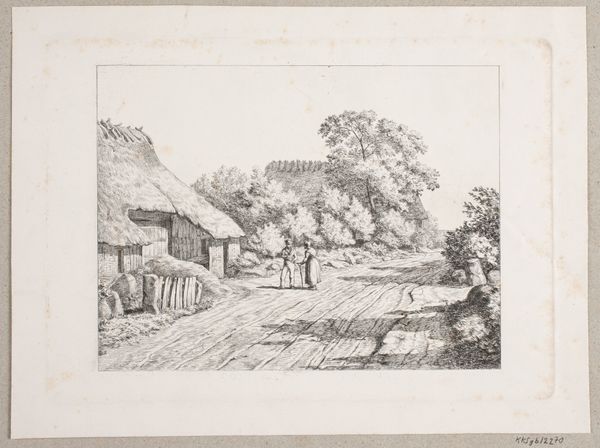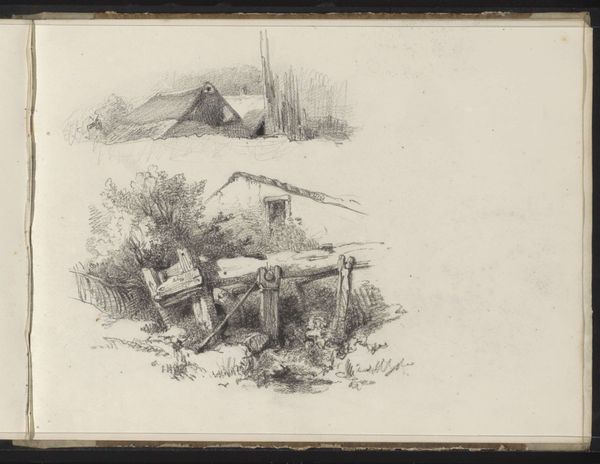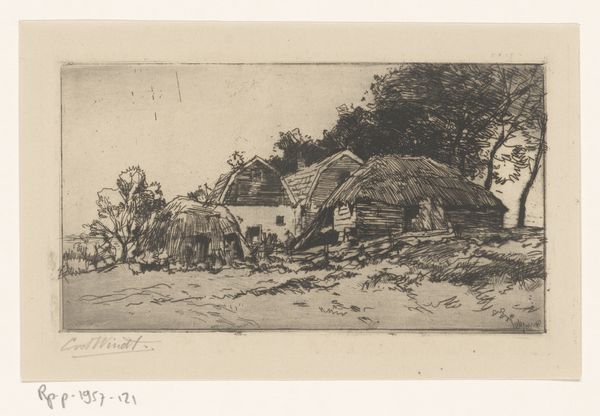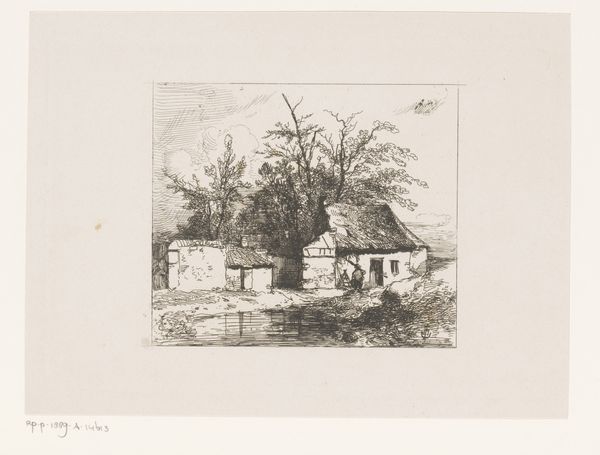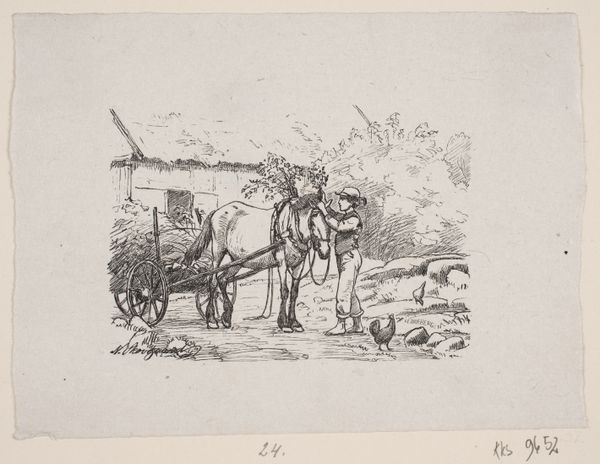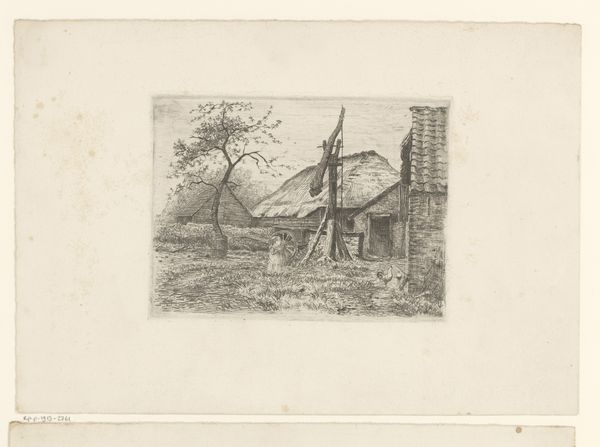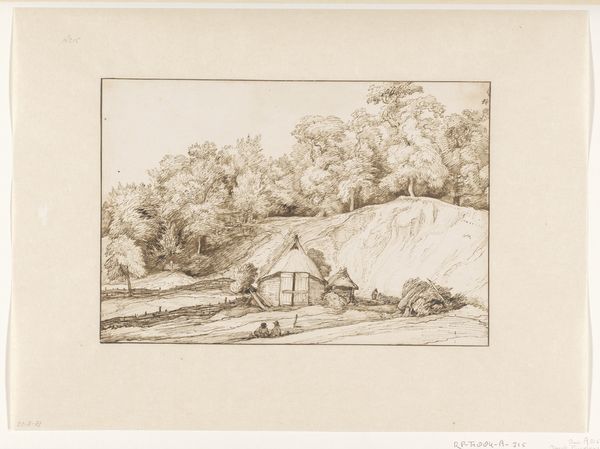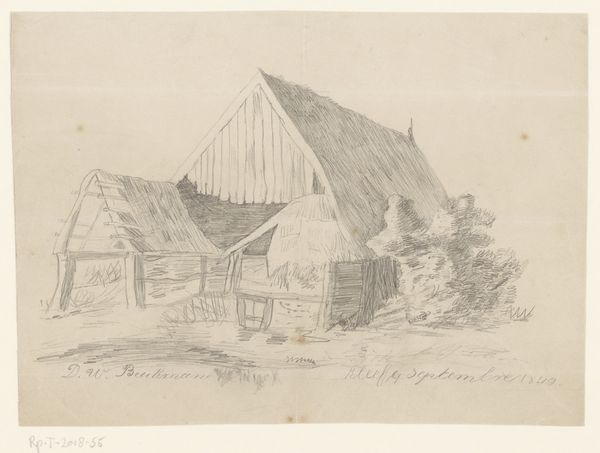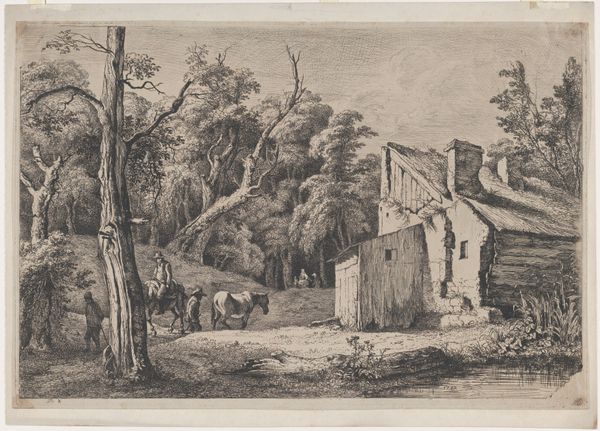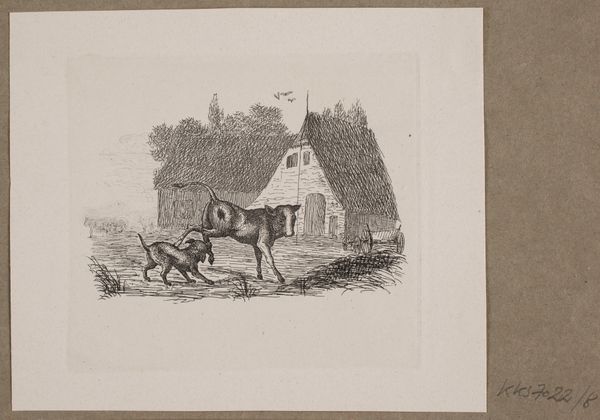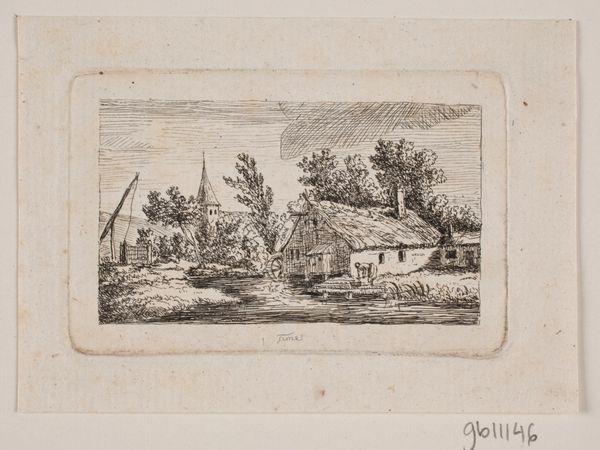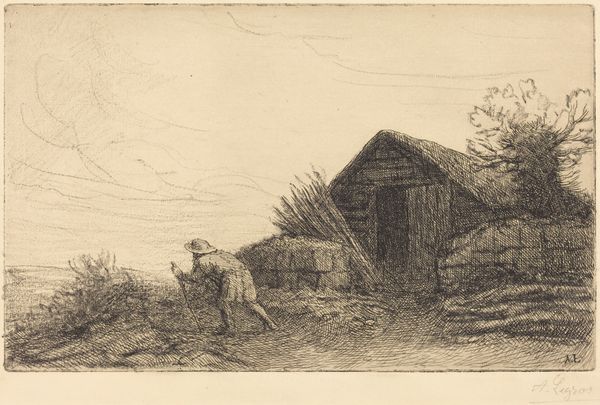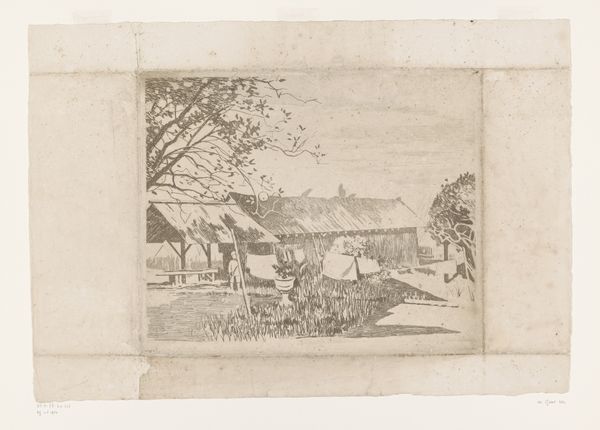
Illustration til Carl Andersens digt, "Husmandskonen" 1870 - 1874
0:00
0:00
Dimensions: 93 mm (height) x 106 mm (width) (billedmaal)
Curator: Welcome. We're standing before Edvard Petersen’s “Illustration til Carl Andersens digt, "Husmandskonen," an engraving from between 1870 and 1874. Editor: Immediately, the dense cross-hatching and sharp lines create a textured effect—a tangible, almost gritty atmosphere. There’s an interesting tension between detail and implied form. Curator: Petersen's work offers a valuable window into the romantic and realist portrayals of rural life that gained traction during the 19th century in response to growing industrialisation. The artwork draws direct inspiration from Carl Andersen's poem about the cottager’s wife, positioning the engraving as part of a wider cultural discourse surrounding the life and struggles of common folk. Editor: The formal interplay between the thatched roof, the textured hide of the cow, and the shadowed figure of the woman really draws the eye. Look how the lines vary in thickness to create depth, even the clouds share the consistent texture, a kind of linear weave across the piece. Curator: Indeed. Notice also how the ladder, the cow’s posture, the figures along the road – are positioned diagonally against the blocky, upright shape of the house. This dynamic asymmetry draws attention to how life at the margins always leans against the rigid social structures. These depictions helped shape social and political perceptions of rural populations. Editor: And while the narrative implications are interesting, I'm equally struck by the starkness achieved with a relatively limited range of tones. The engraving focuses less on emotional idealisation and more on the structural and material reality of its subject through detail, and form through shade and hatching. Curator: It encapsulates Romanticism’s complex view of nature—not just picturesque landscapes but also the realities of working the land, reflective of wider aesthetic trends towards incorporating 'everyday' subjects into art. These scenes found wide distribution through print media, solidifying narratives around labor, virtue, and national identity in Denmark. Editor: Studying the details helps highlight a tension between romanticism and realism in its execution. What’s rendered becomes an engagement with form. I can look at Petersen's approach here for quite a while and still discover some subtlety I have overlooked. Curator: Considering its place within Danish Romanticism and Realism opens an insightful perspective on the complex interactions between art, society, and politics during this era.
Comments
No comments
Be the first to comment and join the conversation on the ultimate creative platform.
